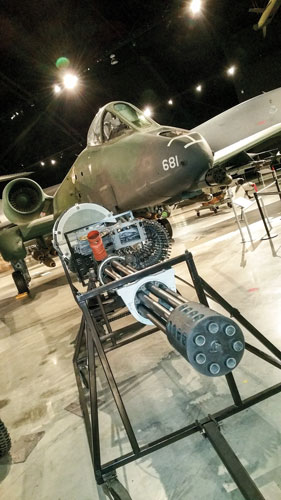
GAU-8/A Avenger on display in the Cold War Gallery at the National Museum of the U.S. Air Force.
Richard Gatling’s venerable multi-barreled gun was initially slow to find an audience, but once it did, it projected its influence on a global scale. From the American West to Africa, Europe and Asia, the expeditious and rhythmic roar of gunfire at a cyclic rate had become a battlefield fixture by the late 19th century.
The fire superiority of Gatlings came with a cost, though. The guns were cumbersome beasts most commonly mounted on wheeled platforms and towed into battle in the same manner as an artillery piece. Arguably the most poignant example of their predisposition for immobility was their absence on a Montana battlefield in June 1876 when Lt. Col. George Armstrong Custer left behind the 7th Cavalry’s Gatlings to pursue Sitting Bull near the Little Bighorn River, resulting in nearly 150 years of Monday-morning quarterbacking on Custer’s decision to opt for speed and mobility over firepower in the battle history records as his last.
Gatling’s 19th century gun wasn’t by definition a machine gun as it required external power for operation — most commonly provided by the gun’s crew using a hand crank (although Gatling patented a design incorporating an electric motor in 1893). The technological evolution of warfare never sits on its hands, and by 1911, all models of Gatling’s gun were deemed obsolete by the United States military, with many unceremoniously destroyed for scrap in favor of more portable recoil-operated, single-barreled machine guns such as Hiram Maxim’s design.
Gatling’s gun and its principles of operation would lie dormant for 36 years until the newly formed U.S. Air Force spearheaded a post-Word War II resurgence of interest in pursuit of developmental aircraft gun platforms. World War

